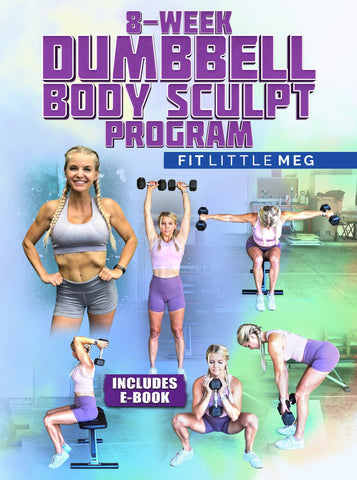
A Guide to Safe and Effective Pregnancy Kettlebell Workouts
Pregnancy is a transformative journey marked by physical changes, and maintaining an active lifestyle can contribute to overall well-being. A pregnancy kettlebell workout, when approached with care and guidance, offers an effective way for expectant mothers to stay fit, strong, and connected to their bodies. In this comprehensive guide, we explore the benefits and considerations of incorporating kettlebell exercises during pregnancy, ensuring a safe and supportive fitness routine.
What this article covers:
- Embracing the Benefits of Pregnancy Kettlebell Workouts
- Considerations for Safe Pregnancy Kettlebell Workouts
- Sample Pregnancy Kettlebell Workout
- Safety Measures for Pregnancy Kettlebell Workouts
Embracing the Benefits of Pregnancy Kettlebell Workouts
Engaging in a kettlebell workout during pregnancy can bring a host of benefits. Kettlebell exercises, when performed with proper form and moderation, promote strength, endurance, and flexibility—essential components for a healthy pregnancy and smoother childbirth. The dynamic nature of kettlebell movements can contribute to improved posture, reduced back pain, and enhanced overall body awareness, addressing common discomforts associated with pregnancy.
Moreover, maintaining an active lifestyle through pregnancy kettlebell workouts has been linked to improved mood and reduced stress levels. The endorphin release that accompanies physical activity can serve as a natural mood enhancer, supporting emotional well-being during the hormonal fluctuations of pregnancy. The sense of accomplishment derived from a safe and tailored kettlebell routine can positively impact self-esteem and body image during this transformative period.
Considerations for Safe Pregnancy Kettlebell Workouts
Safety is paramount when engaging in exercise during pregnancy, and certain considerations must be taken into account when incorporating kettlebell workouts. It is crucial to consult with a healthcare provider before starting or continuing any exercise regimen during pregnancy. Once approval is obtained, selecting appropriate kettlebell weights and modifying movements becomes essential. Opting for lighter weights and focusing on controlled, low-impact exercises helps minimize the risk of strain or injury.
Ensuring proper form is another key consideration. Pregnancy alters the body's center of gravity and can affect balance, so maintaining stability during kettlebell exercises is crucial. Emphasizing exercises that enhance core strength and stability, such as modified planks or seated presses, can be beneficial. Additionally, avoiding exercises that involve lying flat on the back after the first trimester helps prevent potential complications.
Adaptability is a cornerstone of safe pregnancy kettlebell workouts. As the body undergoes changes, some movements may need to be modified or replaced. For instance, swapping traditional kettlebell swings for more controlled and lower-impact movements like kettlebell deadlifts can provide similar benefits while minimizing stress on the pelvic floor.
Sample Pregnancy Kettlebell Workout
A sample pregnancy kettlebell workout should be gentle, focusing on maintaining strength, flexibility, and overall well-being. Below is a modified routine that can be adapted to individual fitness levels and trimesters:
Warm-Up:
Gentle arm circles and leg swings
Marching in place
Workout:
Kettlebell Goblet Squats:
Stand with feet shoulder-width apart, holding a light kettlebell close to the chest.
Perform controlled squats, keeping the movement within a comfortable range.
Aim for 3 sets of 12 reps.
Kettlebell Seated Press:
Sit on a stability ball or chair, holding a light kettlebell in each hand.
Press the kettlebells overhead, maintaining proper posture.
Perform 2 sets of 10 reps.
Kettlebell Modified Deadlifts:
Stand with feet hip-width apart, holding a light kettlebell in front of you.
Hinge at the hips and lower the kettlebell towards the ground, keeping the back straight.
Aim for 3 sets of 12 reps.
Kettlebell Side Plank:
Lie on your side and support your body with your forearm.
Lift your hips to create a straight line from head to heels.
Hold for 20-30 seconds on each side.
Cool Down:
Gentle stretches for the lower back, hips, and shoulders.
Remember to listen to your body, stay hydrated, and modify the routine as needed. If at any point discomfort, dizziness, or shortness of breath occurs, it's important to stop the workout and consult with a healthcare provider.
Safety Measures for Pregnancy Kettlebell Workouts
Ensuring the safety of both mother and baby is paramount when engaging in a kettlebell workout during pregnancy. Implementing specific safety measures and adhering to guidelines helps create a supportive exercise routine that aligns with the unique needs of this transformative period.
Consultation with Healthcare Provider:
Prior to commencing any exercise routine during pregnancy, it is crucial to consult with a healthcare provider. This is especially important for individuals with pre-existing health conditions or complications. Clearance from a healthcare professional ensures that the chosen workout is suitable for the specific circumstances of the pregnancy.
Appropriate Kettlebell Weight:
Selecting an appropriate kettlebell weight is key to preventing strain or injury. During pregnancy, it is advisable to opt for lighter weights than those used before pregnancy. This ensures that the workout remains challenging without placing excessive stress on the body. As a general guideline, choose a weight that allows for controlled movements and proper form.
Modification of Movements:
Pregnancy brings about changes in the body's center of gravity, flexibility, and balance. Modifications to traditional kettlebell movements may be necessary to accommodate these changes. For instance, replacing high-impact exercises with low-impact alternatives, such as kettlebell deadlifts instead of swings, can reduce stress on the joints and pelvic floor.
Mindful Core Engagement:
Engaging the core mindfully is crucial during pregnancy kettlebell workouts. Focusing on exercises that strengthen the deep abdominal muscles, such as modified planks or pelvic tilts, contributes to core stability. Avoiding movements that excessively strain the abdominal muscles, especially during the later stages of pregnancy, helps prevent diastasis recti, a condition characterized by the separation of the abdominal muscles.
Monitoring Heart Rate:
Monitoring heart rate is essential to prevent overexertion. While there is no universal target heart rate during pregnancy, a general guideline is to aim for a moderate intensity level. Being able to carry on a conversation during the workout is an indicator that the intensity is appropriate. If at any point the heart rate becomes excessively elevated, it's advisable to pause and allow it to return to a comfortable level.
Proper Hydration and Nutrition:
Staying well-hydrated is crucial during pregnancy workouts. Adequate fluid intake helps prevent dehydration, which can lead to complications. Additionally, maintaining a balanced and nutritious diet supports both maternal and fetal health. Consuming a small, nutritious snack before the workout can provide the necessary energy without causing discomfort.
Adequate Warm-Up and Cool Down:
Initiating the workout with a thorough warm-up prepares the body for exercise and reduces the risk of injury. Gentle cardiovascular activities and dynamic stretches are ideal. Similarly, concluding the workout with a proper cool-down, including static stretches, helps prevent muscle stiffness and supports flexibility.
Listening to Body Signals:
Paying close attention to the body's signals is crucial during pregnancy kettlebell workouts. If any discomfort, dizziness, or shortness of breath occurs, it is imperative to stop the workout immediately. The body's response to exercise may vary day by day, and being attuned to these variations ensures a safe and enjoyable workout experience.
Avoiding Overexertion and Exhaustion:
Pregnancy is not the time to push for personal bests or engage in exhaustive workouts. Overexertion can lead to increased stress on the body and potential complications. It's essential to approach each workout with the intention of maintaining overall fitness and well-being rather than pushing physical limits.
Regular Check-Ins with Healthcare Provider:
Throughout the pregnancy, it's advisable to have regular check-ins with the healthcare provider to ensure that the chosen exercise routine aligns with the evolving needs of both mother and baby. Any changes in health or pregnancy status should be communicated to the healthcare provider promptly to receive updated guidance.
In conclusion, a pregnancy kettlebell workout, when approached with mindfulness and adaptations, can be a safe and effective way for expectant mothers to maintain fitness and well-being. Staying connected to the body's changing needs and prioritizing safety ensures a positive and empowering exercise experience during this transformative journey.
Level Up Your Fitness With The Kettlebell Collection From The Masterminds At Strong and Fit!
Did you find the blog helpful? If so, consider checking out other guides:
- Unleashing the Benefits of Kettlebell Workouts for Women
- Unleashing the Power of Kettlebell Workouts for Men
- Crafting Effective Single Kettlebell Workouts
- The Transformative Nature of Kettlebell Circuit Workouts
- The All-Inclusive Guide to Kettlebell Workouts
- Unlocking the Benefits of a Kettlebell Daily Workout Routine
- A Comprehensive Guide to Kettlebell Strength Workouts
- Mastering the Art of Kettlebell Complexity
- Mastering the Art of Kettlebell Movement
- A Deep Dive into Functional Kettlebell Exercises
- A Comprehensive Exploration of Their Effects on the Body
- Comprehensive Insights into Single Kettlebell Workouts for Mass
- Full-Body Kettlebell Workouts
- The Power of Kettlebell Benefits
- Exploring the Essence of Kettlebells







